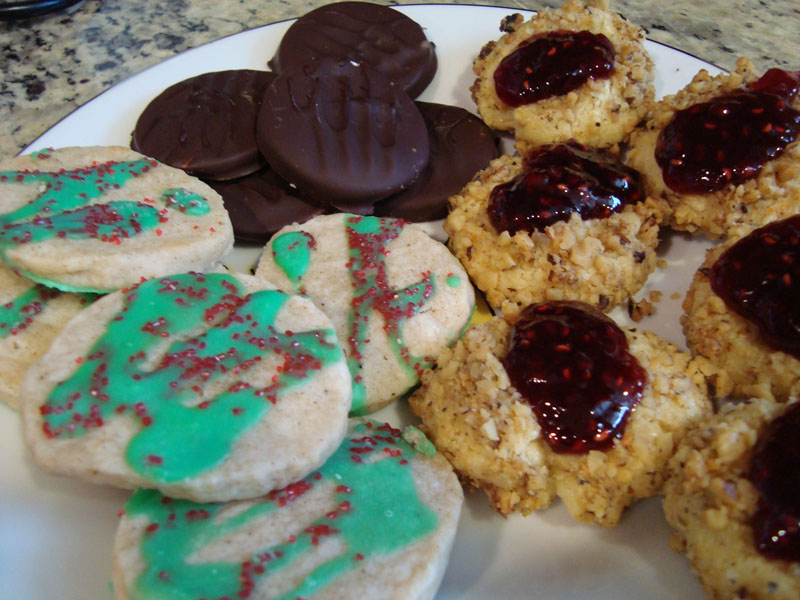I have been baking a lot of cookies lately, getting ready for Eat Swim Shop’s 12 days of Christmas cookies (Get excited!!!). But I know some of you have probably already started baking, so I wanted to give you a few cookie baking tips.
**If you if you need a good cookie recipe before Tuesday, check out my sugar cookies, monster cookies or super easy peppermint brownies) or check out Epicurious’s 25 days of Christmas cookies. Amazingly enough, I didn’t include any of those cookies in my 12 (although I did consider a few).
Baking times: Not all ovens are created equal. Many of them heat unevenly, and some heat faster than others. I usually turn my cookie sheets around halfway through, and start checking the cookies a minute or two before they are supposed to be done. And if I have cookies on different racks in the oven, I also will switch top to bottom and bottom to top.
Butter: Unless the recipe states otherwise, it’s generally a good idea to set your butter out on the counter for a bit (even if it doesn’t warm all the way to room temperature) before starting. And if there are butter options at your grocery store, keep in mind that better butter will result in better-tasting cookies. I always use unsalted (of whatever brand), but feel free to use salted unless the recipe states otherwise.
Cookie sheets: I like lining my cookie sheets with parchment (not wax!) paper or a silicone baking mat. Both make cleanup much easier. Also, if you have an air-cushioned cookie sheet, try not to submerge the whole thing in water. If you do (like I always do), make sure you get as much water out of the cushion part as possible and then let it dry for a while or put it in a hot oven for a while to let the water evaporate. Otherwise the water will evaporate during the baking process and the steam could do weird stuff to your cookies. Also avoid putting unbaked cookie dough on hot cookie sheets. You can run some cool water over the empty cookie sheet (using a hot pad to protect your hand, of course) if you need to cool it down quickly.
Cooling: If you have (or can get) some wire cooling racks, I recommend you use them for cooling cookies entirely before you put them in a container for storage. If not, you can let them cool on a plate or large platter (flat is best, especially if the cookies have some kind of frosting or jam that might drip off the side). I always store my cookies in an air-tight container at room temperature, unless the instructions say otherwise (or if there is some kind of frosting or filling that won’t keep at room temperature). If the cookies have a frosting or filling that doesn’t dry/harden, store the cookies in single layers with wax paper in between.
Refrigerated dough: The reason some recipes tell you to refrigerate dough for some length of time before baking is that the dough will not be ready to work with immediately — it will either be too flaky/crumbly, too soft or both. You can speed up the process by putting the dough in the freezer, or you can even put it in the freezer for a few days and bake it later. I like refrigerated dough recipes during the week because I can make the dough one night and bake the cookies the next.

